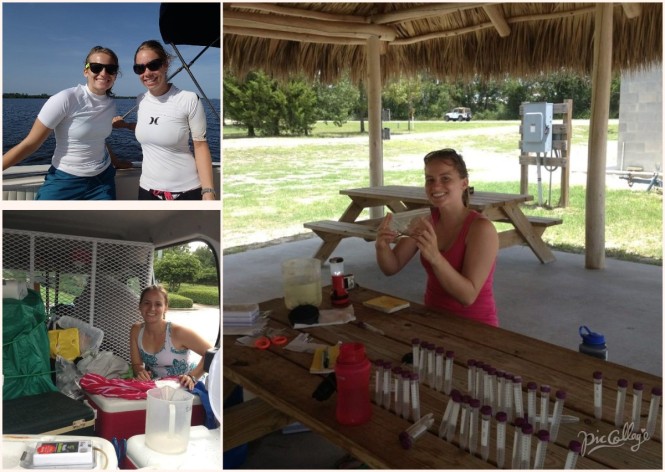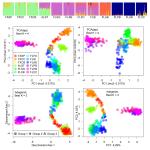Recently one of my dissertation chapters was published in the journal Molecular Ecology. It’s titled “Population genomics reveals multiple drivers of differentiation in a sex-role-reversed pipefish, Syngnathus scovelli“.
In the study, my labmate/coauthor Emily Rose and I collected pipefish from 12 populations in the Gulf of Mexico (I wrote about the collecting trip in a series of blog posts1,2,3,4,5,6,7,8). I took the DNA and cut it up into a bunch of little pieces using special proteins and sequenced those little pieces using ‘high-throughput sequencing’–basically, using the latest sequencing technology to get millions of short sequences reads. I then used the sequencing information to discover how similar the different populations were using a variety of statistical techniques. When we collected the fish, Emily and I had also photographed them, and from the photographs I was able to measure the size of the fish and to quantify the female bands (those silvery stripes on their bodies in the images above)–so I was able to compare traits in addition to genetics among the populations of pipefish.

Basically, I found that most of the genetic differences between the populations are due to so-called ‘neutral’ evolutionary processes such as migration and random genetic drift (i.e., not selection). On the other hand, the traits values were not correlated with geographic distance, suggesting that something else (possibly selection) might explain variation in the traits. We did find some genetic regions correlated with the trait values, and some that were correlated with environmental variables like temperature. But overall, we found that the traits and genotypes followed different patterns. Because the gene regions I studied used were distributed throughout the genome, these findings suggest that selection acting on the traits we measured do not have genome-wide effects but may have effects concentrated in certain genomic regions.
- Genetic groupings: the populations sort into 3-4 groups (Flanagan et al. 2016)
- Trait-based groupings: all of the populations form one big clump with one or two populations showing slight deviations (Flanagan et al. 2016)
My paper describes a population genomics study. Population genomics is the genome-wide extension of population genetics–both aim to understand microevolutionary processes (i.e., shifts in frequencies of different forms of genes), but population genomics does so on a genome-wide scale (Luikart et al. 2003). Population genomics studies are important because they help researchers understand how populations are related to each other, how populations differ, how species adapt to new environments and evolve into new species, and which genetic regions are associated with traits (including disease traits). Population genomics is in part what allows companies like 23andMe to tell you what proportion of your genome comes from your Neandertal ancestors, and population genomics has helped identify genes associated with diseases (e.g., BRCA1 and breast cancer). Population genomics has also started to become a common method within the fields of evolutionary genetics, molecular ecology, and conservation genetics.
So why should you care about my population genomics study? First, it shows us that multiple evolutionary processes (migration, genetic drift, and selection) are prominent in shaping the genome and traits of pipefish. Evolutionary biologists want to know the relative importance of these forces because we want to know whether evolution is adaptive (driven by selection to help the species better fit the environment) or whether it is stochastic (driven by changes in population demographics like being cut off from other populations). This helps us predict how species might react to various threats like climate change and fragmenting populations. As more population genomics studies of wild populations accumulate, we can start to compare between species and look for broad patterns that might provide insight into common patterns of evolution. Additionally, genomic studies such as this one can be used to identify possible genetic regions that are associated with environmental variables like temperature that could be useful for monitoring populations in the face of a changing climate.
Note: If you would like a copy of my paper and don’t have access to it through a university library, please email me! Due to copyright restrictions I can’t post the PDF but I’d be happy to send it to you.



[…] when I was conducting my population genomics study, I ran my data in LOSITAN and found some surprising results. I had sampled 12 populations, so I […]